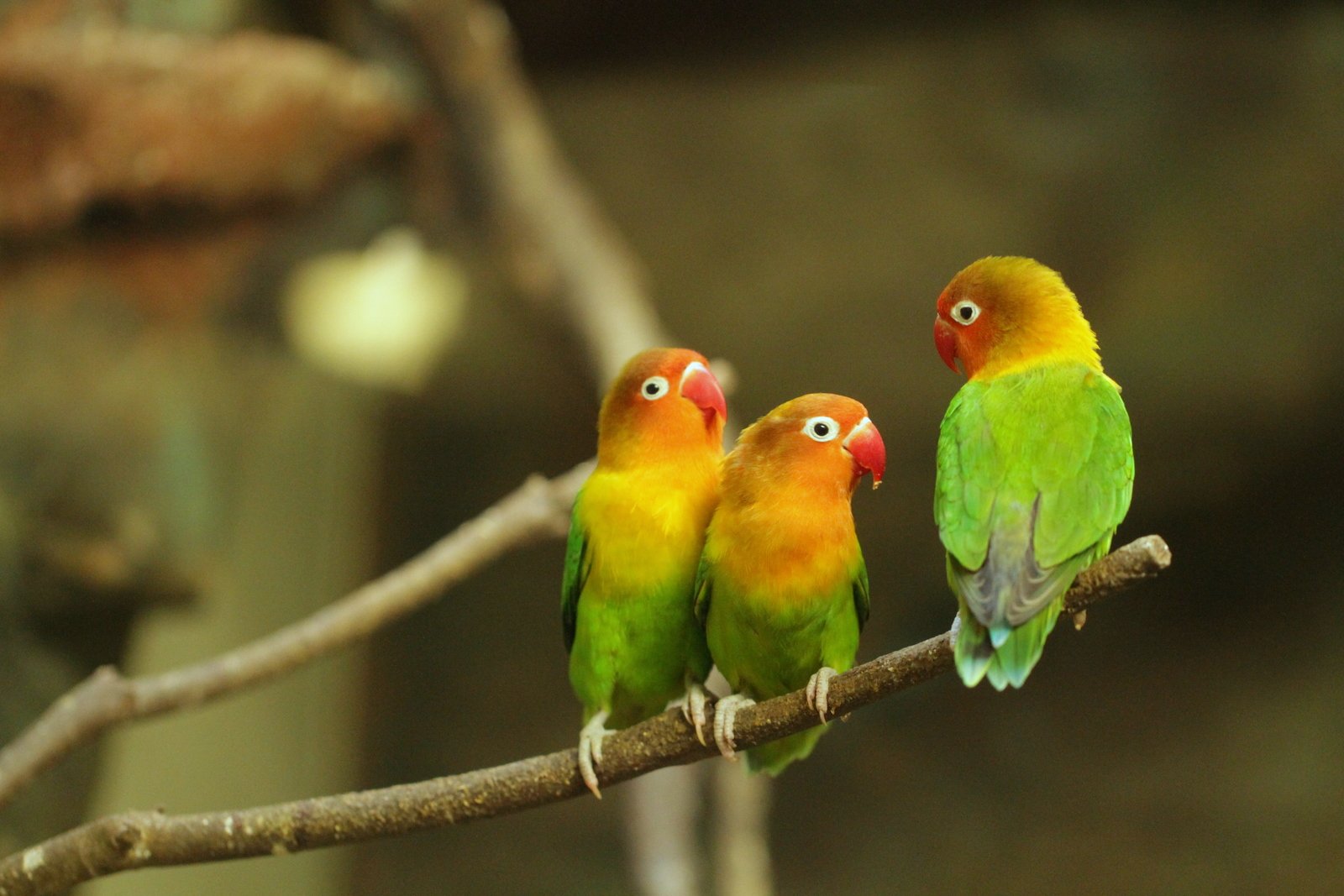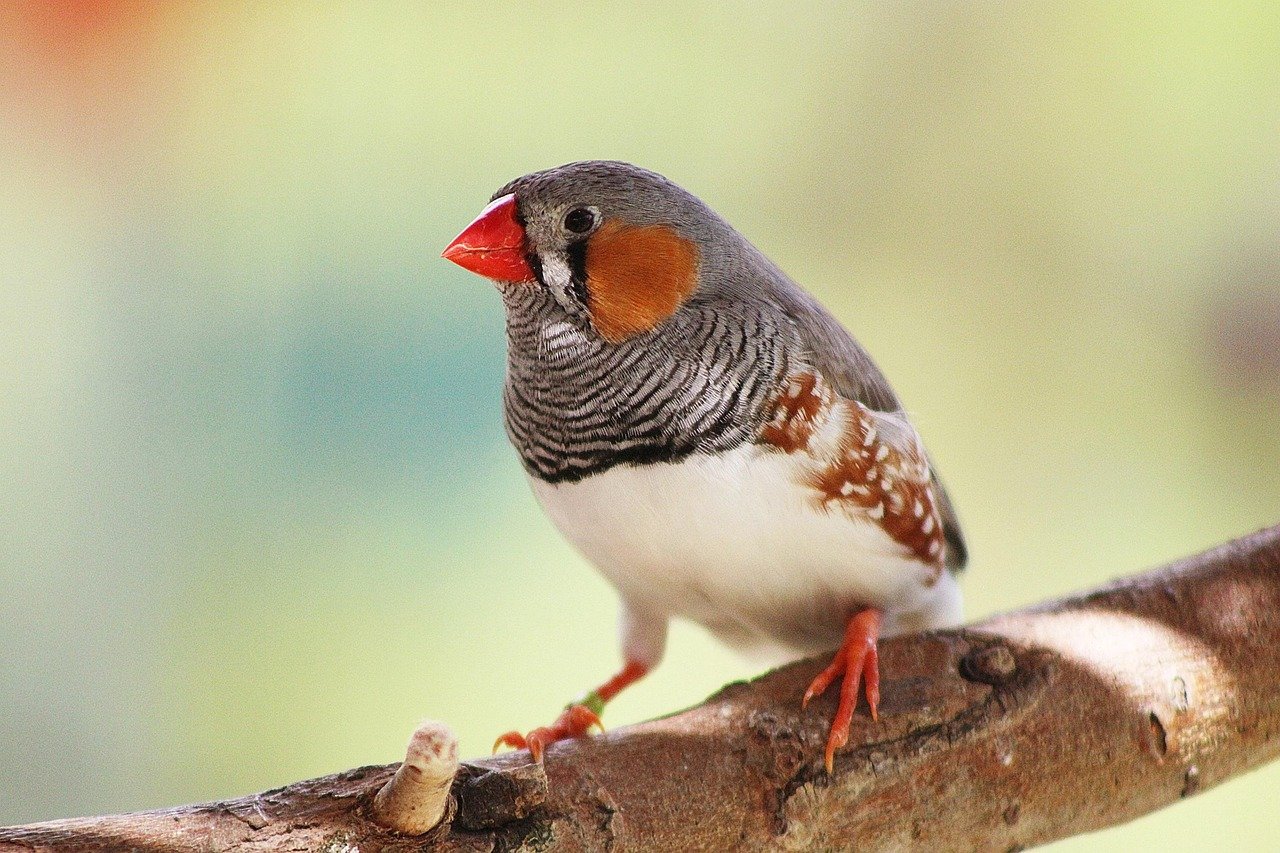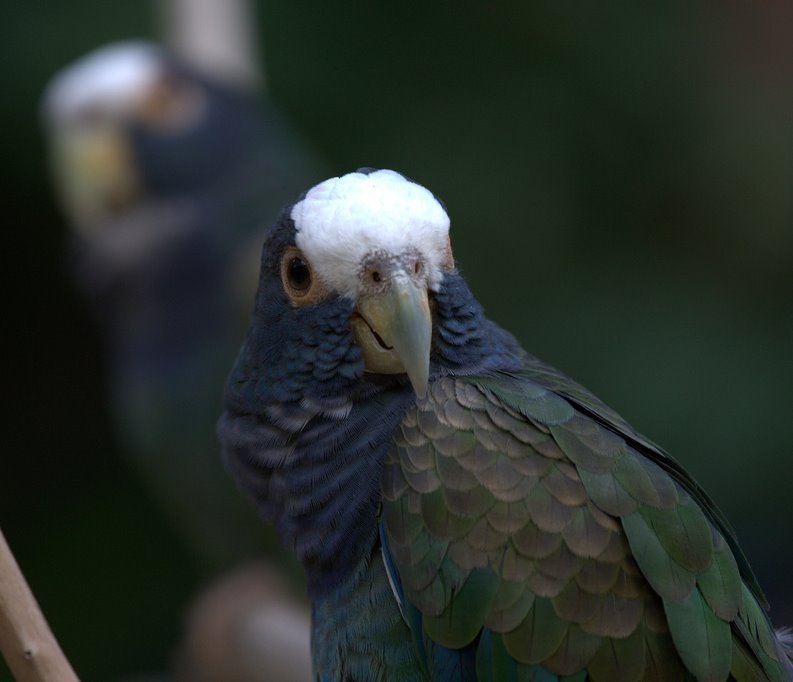Aviaries bring a touch of nature into our homes, offering birds the space they need to stretch, play, and socialize. However, not every bird is suited for the communal living that aviaries provide. Some species flourish in the open, dynamic environment, while others prefer the solitude of a more secluded setting. Social birds thrive in flocks, engaging in playful interactions, while more territorial species may feel stressed or overwhelmed in a shared space. Understanding the needs and personalities of different birds is key to creating a happy, harmonious environment. Here’s a guide to understanding which pet birds thrive in aviaries and which ones might be happier in a more private space.
1. Budgerigars: The Social Butterflies

Budgerigars, often affectionately known as “budgies,” are small parrots that are known for their vibrant colors and lively personalities. They are highly social creatures, making them ideal candidates for aviaries. Budgies thrive in environments where they can interact with other birds, as they often mimic sounds and engage in playful antics. Their natural curiosity and friendly demeanor make them a favorite among bird enthusiasts. In an aviary, they can form bonds not only with their fellow budgies but also with other compatible bird species. Their adaptability and resilience to different climates further enhance their suitability for aviary life.
2. Cockatiels: The Charming Companions

Cockatiels are another popular choice for aviary settings due to their gentle nature and playful behavior. These birds come in a variety of color mutations and are known for their expressive crests. Cockatiels enjoy the company of other birds and are famous for their whistling abilities. In an aviary, they have the space to spread their wings and explore their surroundings, which helps them stay active and healthy. Their friendly disposition means they can coexist peacefully with other birds, making them a delightful addition to any aviary community.
3. Lovebirds: The Affectionate Pairs

True to their name, lovebirds are known for their affectionate nature and strong pair bonds. They are small, colorful birds that thrive when they have a companion by their side. In an aviary, lovebirds can engage in social behaviors, such as preening and playing, which are essential for their wellbeing. While they are social, they can be territorial, so it’s crucial to ensure they have enough space to establish their own area within the aviary. Lovebirds’ vibrant personalities and interactive nature make them a joy to watch in a communal setting.
4. Zebra Finches: The Energetic Entertainers

Zebra finches are small, lively birds that bring a burst of energy to any aviary. These birds are known for their distinctive zebra-like stripes and cheerful chirping. They are highly social creatures that thrive in groups, making them perfect candidates for an aviary setting. Zebra finches are excellent at building nests and engaging in playful chases, providing endless entertainment for bird lovers. Their social nature ensures they are happiest when surrounded by other finches, creating a harmonious and dynamic aviary environment.
5. Canaries: The Melodious Singers

Canaries are renowned for their melodious singing, making them a delightful addition to any aviary. These small birds are not only beautiful to look at but also provide a soothing soundtrack with their sweet songs. While they can be social, canaries typically prefer to keep some distance from other birds, making them well-suited for larger aviaries where they can maintain their own space. Their singing can uplift the atmosphere of an aviary, creating a serene and joyful environment for both birds and bird enthusiasts alike.
6. Bourke’s Parakeets: The Gentle Peacekeepers

Bourke’s parakeets are gentle and calm birds that thrive in aviary settings where they can coexist peacefully with other birds. These parakeets are known for their soft pastel colors and quiet demeanor. They are not as active as some other parrot species, preferring to engage in gentle flights and social interactions. Bourke’s parakeets are ideally suited for aviaries that offer plenty of space to explore and perch. Their calm nature makes them compatible with a variety of other bird species, contributing to a harmonious aviary environment.
7. Society Finches: The Cooperative Community

Society finches are aptly named for their cooperative and social nature. These small birds thrive in aviary settings where they can interact with others and engage in communal activities. Society finches are known for their ability to live in harmony with a variety of bird species, making them excellent additions to mixed aviaries. Their friendly and non-aggressive nature ensures they can coexist peacefully, contributing to a vibrant and dynamic aviary community. These birds are also skilled at building nests and caring for their young, further enhancing the aviary’s social fabric.
8. Rainbow Lorikeets: The Vibrant Performers

Rainbow lorikeets are a feast for the eyes, with their stunning array of colors and playful personalities. These birds are highly social and thrive in aviary environments where they can engage in interactive play and exploration. Rainbow lorikeets are known for their acrobatic flights and curious nature, making them a lively addition to any aviary. Their need for social interaction and stimulation is met in the diverse and engaging setting of an aviary. With their vibrant plumage and energetic behavior, rainbow lorikeets add a splash of color and excitement to aviary life.
9. African Grey Parrots: The Intelligent Solitaires
African Grey Parrots are renowned for their intelligence and ability to mimic human speech. However, these birds often prefer a more secluded environment where they can bond closely with their human caretakers. African Greys thrive on individual attention and mental stimulation, which is best provided in a quieter, more controlled setting. Their cognitive abilities require enrichment through puzzles and interaction, making a secluded environment more suitable for their needs. While they can coexist with other birds, they often prefer the company of their human companions.
10. Eclectus Parrots: The Independent Thinkers

Eclectus parrots are unique in appearance and temperament, with males and females exhibiting different colors and personalities. These parrots often prefer a more secluded environment where they can enjoy individual attention and mental challenges. Eclectus parrots are known for their intelligence and calm demeanor, making them well-suited for environments where they can engage in one-on-one interaction. While they can adapt to aviary settings, they thrive in spaces that allow for personal bonding and enrichment, highlighting their independent and thoughtful nature.
11. Amazon Parrots: The Vocal Loners

Amazon parrots are known for their vibrant personalities and impressive vocal abilities. While they can be social, many Amazon parrots prefer a more secluded environment where they can form strong bonds with their human caretakers. These parrots enjoy engaging in interactive play and learning new tricks, which is best achieved in a setting that allows for focused attention. Amazon parrots thrive on routine and consistency, making a more private environment ideal for their well-being. Their vocal talents and affectionate nature make them cherished companions in a dedicated and attentive home.
12. Quaker Parrots: The Territorial Architects

Quaker parrots, also known as monk parakeets, are known for their unique ability to build elaborate nests. These parrots often prefer a more secluded environment where they can express their territorial instincts and engage in nest-building activities. Quaker parrots are highly intelligent and enjoy solving puzzles and learning new tricks, making a private setting more suitable for their needs. While they can coexist with other birds, their territorial nature may lead to conflicts in an aviary. A dedicated space allows them to thrive and showcase their architectural talents.
13. Pionus Parrots: The Quiet Contemplatives

Pionus parrots are known for their calm and gentle nature, making them ideal candidates for a more secluded environment. These parrots enjoy the peace and tranquility of a dedicated space where they can form strong bonds with their human companions. Pionus parrots are not as vocal as some other parrot species, preferring to communicate through subtle gestures and expressions. Their quiet demeanor and affectionate nature make them well-suited for homes that offer a serene and consistent environment, allowing them to thrive in a space where they can feel secure and loved.
14. Rose-ringed Parakeets: The Solitary Explorers

Rose-ringed parakeets are known for their striking appearance and inquisitive nature. While they can adapt to aviary settings, many of these parakeets prefer the solitude of a more private environment where they can explore and engage in interactive play. Rose-ringed parakeets enjoy mental stimulation and challenge, which is best provided in a space that allows for focused attention and enrichment. Their independent spirit and curious nature make them well-suited for homes that can offer personalized care and opportunities for exploration.
15. Senegal Parrots: The Loyal Companions

Senegal parrots are known for their loyalty and ability to form strong bonds with their human caretakers. These parrots often prefer a more secluded environment where they can enjoy individual attention and companionship. Senegal parrots thrive on routine and consistency, making a dedicated space ideal for their well-being. Their affectionate nature and playful behavior make them cherished companions in homes that can offer focused care and enrichment. While they can coexist with other birds, their strong bond with their human companions is often their primary source of comfort and joy.
In conclusion, understanding the social needs and preferences of pet birds is essential for providing them with the best possible environment. Whether they thrive in the bustling activity of an aviary or prefer the quiet solitude of a more private setting, each bird has unique characteristics that must be respected and nurtured. By catering to their individual needs, we can ensure our feathered friends lead happy and fulfilling lives.

Esther is from India; the heartbeat of South Asia, holding a Master’s degree in Zoology and a postgraduate diploma in Animal Welfare. Her enthusiasm for animal welfare drives her passion and dedication to working for animals, ensuring their well-being, and advocating for their rights. With a solid academic background and hands-on experience, she is committed to making a positive impact in the field of animal welfare. In her free time, she enjoys embroidery and sewing. As a Chennaite from Tamil Nadu, Esther loves Bharathanatyam, an Indian classical dance form.






